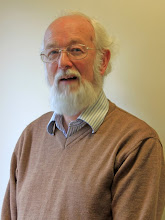Hungary is easily my favourite country in Eastern Europe, and Budapest my favourite city, in both cases probably because I have been so often, know the place well, and have many good friends and colleagues there. So a few months ago, I was delighted when the Hungarian Academy of Sciences invited me to join a new committee they were setting up, namely the External Advisory Board (EAB) for the Academy’s Institute of Economics. Like many things that academics do, this is not a paid position, but the Institute does cover the expenses to get me out to Budapest for meetings. And the first meeting of the EAB took place in Budapest earlier this week.
Accommodation was arranged for me at a guest-house of the Academy, located in the old Castle District of the city, though when we got to the designated address my taxi driver didn’t believe it could be right, as it looked like an ordinary house or apartment building, albeit dating from the 18th century. Luckily, a tiny sign beside the imposing solid wooden door read, ‘MTA Vendégház’, confirming that we were at the right place. Once inside, the welcome was friendly, facilities were fine, and all was well.
Next day our EAB meeting took place at the building that houses the Institute of Economics, a truly horrible concrete edifice whose sole redeeming feature is that once inside, it affords – at least when looking west – lovely views of the southern end of the Buda Hills. We were there to assess the Institute’s annual report for 2009 and to offer advice on its research strategy, but naturally I cannot comment on such things here since our formal business is confidential between the Academy, the EAB itself, and the Institute. However, I can say that the quality of the Institute’s work, and its leading researchers, bears no relation to the quality of their building; they do lots of quite outstanding research and many researchers at the institute have well established international profiles. Given that, it is always a pleasure to visit the Institute, and it was nice, while there, to encounter several researchers I know well from previous visits.
Just like universities in the UK, the Institute faces severe funding pressures these days, and this is forcing it to diversify into more ‘commercial’ types of research and research-related service provision simply to balance the budget. I imagine that some researchers, who are used to the more old fashioned, traditional model whereby they could spend a lot of time ‘sitting and thinking’, must find such trends quite uncomfortable and unwelcome. But again, just as with us, funding pressures are not going to go away, and we all have to find ways to live with them.
What about Budapest itself? As ever, it is a lively city, with lots of tourists still wandering around, both individually and in orderly groups. Some older buildings, such as the main cathedral on the Castle District, are undergoing restoration, and some major construction projects are also on going, notably the fourth metro line, Metro 4. Otherwise, everything seems as normal, except for one surprise when I went down to Moscow Square, a major public transport hub (metro, buses and trams all link up there). For I discovered that my favourite tram-line, the number 56, no longer exists! This is the tram I’ve taken for decades when going out to the Buda Hills – it went all the way out to a little place called Hüvösvölgy towards the northern end of the Hills. Although on this trip I had no time, sadly, to visit the Hills, I was relieved to see that the route of another tram, the number 61, has been extended to go out there. So next time…….


No comments:
Post a Comment